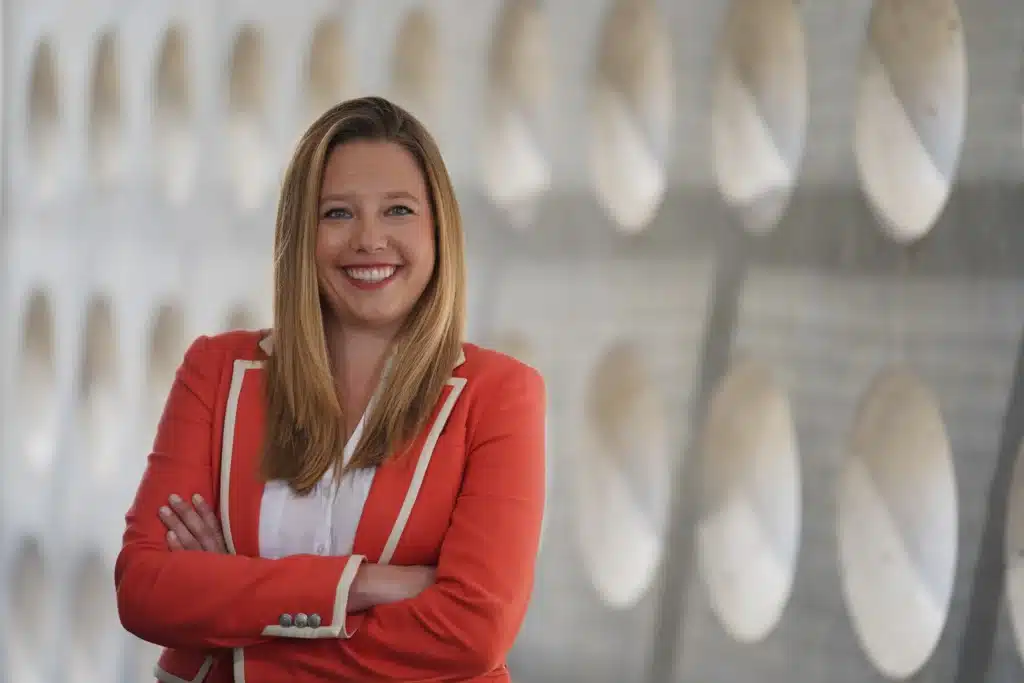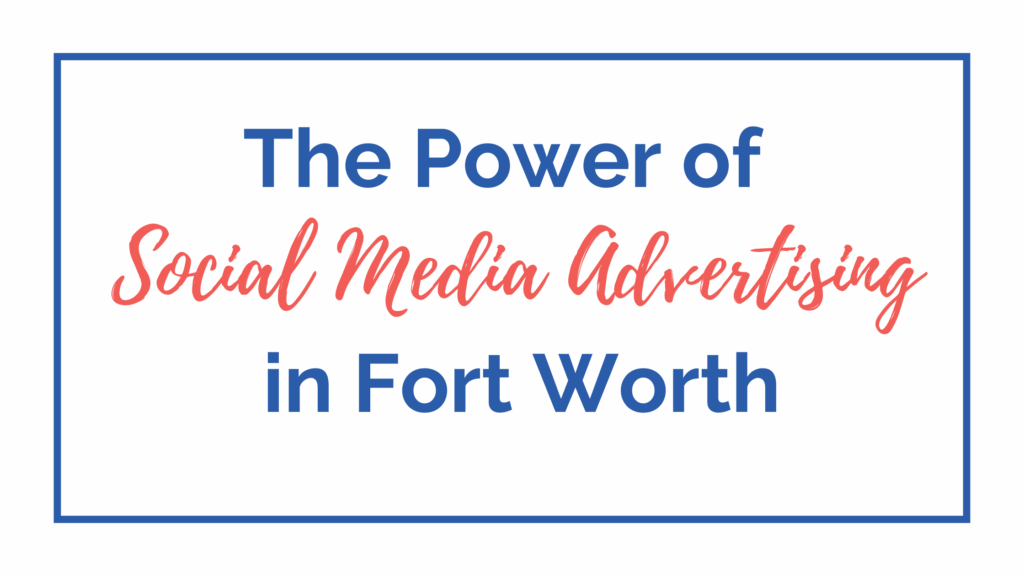Social Media Ads in Fort Worth: Platforms, Targeting & ROI
Your customers in Fort Worth aren’t just names on an email list — they’re neighbors, friends, and familiar faces in your community. The best email marketing doesn’t just sell; it builds real, lasting relationships.
At Panther City Digital Marketing, we’ve seen how thoughtful, local-focused emails can turn first-time buyers into loyal fans. In this guide, we’ll show you how to use email personalization, segmentation, and local content to make your emails feel more like conversations — not campaigns.
Here’s what you’ll learn:
- Why personalization and segmentation matter for Fort Worth audiences
- How to create local content that resonates
- Proven best practices that actually increase engagement
- Real examples from local businesses doing it right
By the end, you’ll know how to make every message and ad feel like a genuine connection — the key to successful Fort Worth social media advertising.
Why Social Media Advertising Matters Locally

Social media advertising gives you reach plus precision — something traditional media like billboards or print can’t match, especially when you’re trying to capture Fort Worth–area customers. Rather than broadcasting to a large mass, you can target specific ZIP codes, neighborhoods, or radius distances around your store. That ensures your ad spend is concentrated on people who can act locally.
For small businesses in Fort Worth, typical “foot traffic” marketing (flyers, local radio) has diminishing returns vs ads that drive measurable online to offline conversions. With social platforms, you can track which ads drove website visits, form completions, or even foot visits (via store visits or local store conversions), letting you pivot quickly. This measurability is a core advantage — you’re not guessing which ad moved the needle. (See more on measurement in Section 6.)
Data from social marketing firms show that targeted social ads tend to outperform traditional leads in cost per acquisition, because you eliminate wasteful impressions. Eco York+2Sproutbox™+2
In Fort Worth, community identity matters strongly. Ads referencing local events (e.g. Main Street Arts Festival, Fort Worth Stock Show), neighborhoods (Southlake, TCU area, Magnolia), or local icons (Stockyards, Sundance Square) often see higher engagement because they trigger local affinity. You can A/B test two creatives — one generic, one with a Fort Worth landmark in the image or copy (“In Fort Worth, we’re with you”) — and often find the latter gets better CTRs.
Choosing the Right Social Media Platforms for Fort Worth Audiences
Not every social platform will suit your business — picking the right ones ensures you get the most return for your time and budget.
Facebook / Instagram
These remain the workhorses for many local businesses. Meta’s targeting is mature, and you can narrow by ZIP, interests, behavior, or demographics. In Fort Worth’s demographic mix (median age ~34) Instagram is especially strong among under-35s. myshyft.com –
Service businesses (plumbers, HVAC, salons) and retail often do well with carousel ads, story ads, video, and lead forms on these platforms.
TikTok & Reels / Shorts
Younger audiences are engaging more via short-form video. If your business can produce fun, authentic, local content (behind the scenes, “a day in Fort Worth,” community events), TikTok ads or Instagram Reels can deliver strong reach. Use localized hashtags (#FortWorthTX), and include mentions of local landmarks to boost relevance.
LinkedIn, Pinterest, X (Twitter)
- LinkedIn is best for B2B or professional services (attorneys, consultants, contractors). You won’t use radius targeting as tightly, but targeting by job title + location can work.
- Pinterest can help for home decor, interior design, landscaping, or wedding vendors in Fort Worth — users often plan projects.
- X / Twitter is less about conversions, more about brand voice, event promotion, or community engagement in Fort Worth (e.g. local announcements).
Platform alignment tip: Start with 1–2 platforms where your audience is actually active — better to do two well than five poorly. (A Reddit discussion notes: “If you’re on a tight budget, focus on platforms where your audience is most active — it’s better to go deep on one or two than spread yourself too thin.”) Reddit
Use internal data (e.g. customer demographics, email list) to cross-reference what platforms your best customers use. If your top 20 customers are heavy Instagram users, prioritize it. Also, in Fort Worth, partner with local influencers or micro-creators (Fort Worth food bloggers, local IG influencers) for platform credibility and creative amplification.
Local Targeting Strategies in Fort Worth

For social ads to succeed in Fort Worth, local targeting is your competitive edge — you must reach people who live, work, or frequently move around in your service area. Below are proven tactics:
Geotargeting, Radius & ZIP-level Targeting
Set your ad targeting to Fort Worth city limits, or use a radius (e.g. 5–15 miles) around your store or service area. You can layer ZIP codes you serve (e.g. 76107, 76102, 76109). This ensures your ad spend is concentrated on people physically able to use your services.
Neighborhood-level / District-level Ads
For even tighter targeting, run separate ad sets targeting specific neighborhoods or districts (e.g. Near Southside, TCU area, Alliance corridor). Use local creative (images from that district) to boost relevance. This “hyperlocal split test” often reveals which submarket gives you best ROI.
Custom Audiences & Lookalike Audiences
Upload your customer list (emails, phone) to create a Custom Audience. Then build a lookalike audience (1%–3%) centered in Fort Worth to find users similar to your current customers. This combination often yields lower CPA. Wikipedia
You can also retarget website visitors (e.g. people who visited your Fort Worth landing page) or video viewers.
Event-based & Temporal Targeting
Fort Worth has major local events (e.g. Main Street Arts, State Fair, Stock Show). Schedule campaigns timed around these events. Or geofence ads around event venues in windows (e.g. 1 hour before showtime) to capture attendees. This temporal targeting can amplify foot traffic.
Combine local targeting + interest layering using Fort Worth–specific interests (e.g. “Fort Worth Stockyards,” “TCU Horned Frogs,” “Fort Worth art”) to weed out irrelevant audiences even within Fort Worth. Also, test exclusion zones — exclude suburbs far away (e.g. exclude people > 25 miles) even if within radius.
Ad Budgeting & ROI Considerations
Understanding ad budgeting and ROI—how much to spend and how to measure success—is critical for Fort Worth small business owners to avoid wasting money.
Setting a Social Media Ad Budget
A rule of thumb is to allocate 15–20% of your marketing budget toward paid social (or a portion of overall revenue). Americaneagle.com+1
Industry benchmarks for small businesses often fall between $500–$1,500/month for starting ad spend plus management costs. Socialinsider+2RecurPost+2
When starting, allocate 15–20% of that to experimentation (new audiences, creatives), and reserve the rest for best-performing campaigns.
Cost Metrics You Need to Know
- CPC (Cost Per Click)
- CPM (Cost Per Mille, cost per 1,000 impressions)
- CPA / CPL (Cost Per Acquisition / Lead)
- ROAS (Return on Ad Spend) — revenue ÷ ad spend
- Conversion Rate (from click to action)
Use UTM tracking, Facebook Pixel or equivalent conversion tags, and custom tracking URLs to tie ad clicks to website actions.
Testing Budgets & Scaling
Start with smaller budgets on multiple ad sets to test audience, creative, and placement variables. After 2–4 weeks, identify top performers and reallocate more budget to those. Don’t scale an underperforming campaign.
Incremental scaling (30% weekly increases) is safer than drastic jumps.
Attribution & ROI Models
Use a last-click model or multi-touch attribution if you have multiple touchpoints (ads → website → email → final sale).
Don’t ignore offline attribution: if a customer saw an ad and then called or visited in person, track that. Many social ad platforms now support store visits attribution (if your business qualifies).
In Fort Worth, local ad competition may spike during community events or seasonal peak times (e.g. summer, holiday shopping). You may see CPC creep upward. To compensate, dynamically shift budget into less-competitive zones (e.g. off-peak hours or fringe neighborhoods) while maintaining core zones. Also, maintain a “control campaign” (same core audience) to benchmark changes over time.
Creative, Messaging & Format Best Practices
Even with perfect targeting, your ad creative determines how many people stop and act. Here’s how to make your social ads native, relevant, and compelling for Fort Worth:
Localized Creative & Imagery
Use images or video showing Fort Worth landmarks, neighborhoods, or your business location. For example, a photo facing the Burnett Park skyline, or a TCU campus angle if near your clientele, helps establish locality. Include “Fort Worth” in headlines (e.g. “Fort Worth plumbing done right”) for resonance.
Ad Formats to Use
- Video / short form (Reels, TikTok, Stories): high engagement, especially mobile-first.
- Carousel / Collection: great for showcasing multiple services or products (e.g. “HVAC, plumbing, electrical”).
- Lead forms / Instant forms (especially in Meta): reduce friction — users can submit without leaving platform.
- Dynamic ads / retargeting: show users products or services they viewed.
- Single image + overlay text: keep text minimal — focus on visuals that tell the story quickly.
Messaging & Offer Strategies
Craft copy that speaks to local pain points or conditions. For example, “Beat Fort Worth heat — AC tune-ups starting at $99” or “Same-day service for Fort Worth residents.” Use urgency and locality.
Include social proof (reviews, star ratings, “Fort Worth’s trusted…”) to build credibility.
Social cues (showing “X of your friends liked this”) can increase ad efficacy via peer influence. Field experiments show including social cues (e.g. “Your friend Jane likes this”) can measurably boost conversion rates. arXiv
Rotate “local insight creative” periodically — e.g. seasonal ads referencing Fort Worth events (e.g. “Don’t get caught without AC before Fort Worth’s summer heat”) or tie-ins to local holidays. Also, periodically run a “community spotlight” ad (e.g. “We’re proud to serve Southside Fort Worth”) with minimal offer, purely brand-building — this improves brand recall when direct ads run.
Measuring, Optimizing & Scaling Campaigns
You must constantly refine. Campaigns seldom win “set and forget.” Here’s how to ensure your Fort Worth campaigns evolve.
Key KPIs to Monitor
In addition to impressions, CTR, CPC, CPA:
- Conversion rate (click to lead or click to sale)
- Cost per lead / cost per conversion
- Return on Ad Spend (ROAS)
- Frequency (how many times people see the same ad)
- Ad relevance / quality score (platform metric)
- Video watch metrics (for video ads: % watched)
A/B Testing & Iteration
Run experiments: creative A vs B, copy A vs B, audience A vs B. Let them run long enough to reach statistical significance.
Always kill or pause ads that underperform. Gradually double down on winners.
Also rotate creatives to avoid ad fatigue — when the same audience sees your ad too often, performance degrades.
Retargeting & Funnel Strategies
Retarget people who engaged but didn’t convert (e.g. visited a landing page, engaged with an ad). Use harder offers (e.g. discount, free estimate).
Build funnel campaigns:
- Top of funnel — awareness (video or reach)
- Mid funnel — engagement / consideration (carousel, quiz, lead magnet)
- Bottom funnel — conversion (offer, scheduling)
Expanding to Surrounding Areas
Once Fort Worth yields consistent ROI, begin scaling outward into adjacent ZIPs or cities (Grapevine, Hurst, Aledo). But maintain separate ad sets and creatives for each region to track performance.
Use geo-targeting and lookalikes per region.
Also, maintain a core Fort Worth campaign as your anchor.
Keep a “control ad” (same core audience + creative) throughout your campaign period. This acts as a baseline to detect seasonality or market shifts (e.g. rising CPC) without confusing variables. Also, track competitor ad activity (e.g. via ad libraries) — if costs jump, it may mean a competitor is aggressively entering the Fort Worth ad space.
Risks, Compliance & Common Pitfalls
No ad strategy is without hazards. Getting ahead of them protects your budget and reputation.
Ad Fatigue & Creative Burnout
If your same creative runs too long, audiences get blind to it. CTR drops, CPC rises. Rotate assets every 2–4 weeks. Scale new creative gradually.
Monitor frequency — keep it reasonable (e.g. ≤ 4–6 times per week per user, depending on campaign).
Policy Violations & Ad Disapprovals
Different platforms have rules around claims (e.g. “best in Fort Worth”), health claims, before/after imagery, etc. Violations may cause ad rejections or account suspension. Always disclose offers (“% off,” “limited time”) and read policies.
Be careful with sensitive categories (health, financial, legal) — follow platform guidelines.
Privacy & Data Limitations
With iOS privacy changes and evolving data regulations, ad targeting options may shrink. For instance, you may not capture cross-app tracking, so retargeting windows or attribution may be limited.
Ensure you use first-party data, consent pop-ups, and robust tracking (Pixel, conversion API) to maintain measurement integrity.
Overextending to Too Many Platforms Too Soon
It’s tempting to chase every trendy platform, but spreading thin reduces impact. Focus on 1–2 core platforms until your ROAS is stable, then expand.
Beware of “shiny object syndrome” — continually jumping to new ad formats before mastering the basics.
In Fort Worth, local competition (e.g. several plumbers, HVAC companies) may bid aggressively at times (e.g. heat waves). Watch CPC spikes, and proactively reduce bids in overbidding zones or shift to less saturated neighborhoods temporarily. Also, maintain a “negative audience list” — exclude people who previously opted out or unsubscribed, to avoid waste.
This section helps ensure you allocate ad dollars wisely and avoid common traps in local social media campaigns.
Fort Worth Case Study: Local Business That Leveraged Social Ads
Let’s walk through a hypothetical but realistic scenario for a Fort Worth small business — “Cowtown Cleaners & Alterations”, a dry cleaning / tailoring shop serving the Near Southside, TCU area, and West 7th neighborhoods.
Baseline Situation
- No prior paid social ads
- Organic posts yield occasional interactions but no consistent leads
- Customer base is local — pick-up/drop-off service in nearby neighborhoods
Strategy Execution
- Platform choice: Started on Facebook & Instagram because their customer base skews 30–60-year-olds who use these platforms.
- Targeting:
- Radius of 5 miles around their shop, layered with ZIP codes (e.g. 76107, 76109, 76102)
- Created Custom Audience from their email list (past customers)
- Built lookalike audience (1.5%) within Fort Worth
- Ran neighborhood-level ad sets (Near Southside vs West 7th)
- Creative & offer:
- Image ad showing storefront + tagline “Fort Worth’s trusted cleaner since 2010”
- Carousel showing services (dry cleaning, tailoring, wedding dresses)
- Offer: “Free pickup/delivery for orders over $100 in Fort Worth area”
- Local copy: “Serving your neighborhood – schedule a pickup in 76107, 76109, 76102”
- Budget & testing:
- Initial ad spend: $700 for the first 30 days
- Reserved 20% for testing creative variations
- After 2 weeks, paused underperforming sets, reallocated to best ones
- Measurement & optimization:
- Tracked lead forms (pickup scheduling), calls, web visits
- Retargeted users who viewed service pages but didn’t submit forms
- Scaled best ad sets to $1,500/month over next quarter
Results (hypothetical yet plausible)
- Achieved 3x ROAS within 2 months
- Cost per lead: ~$12
- Neighborhood analysis: ad sets targeting 76107 delivered 30% better CTR than broader radius
- Many walk-in customers said “I saw your ad on Instagram”
- Business integrated ad data into their weekly operations: when ads said Mondays got higher conversions, they allocated staff accordingly
Key lessons
- Local targeting plus localized creative matters
- Testing and pausing quickly preserves budget
- Retargeting warm traffic significantly improves ROI
- Scaling gradually prevents overspending in saturated zones
This case shows how a modest budget, local focus, and smart creative can deliver meaningful ROI for a Fort Worth business.
Quick Takeaways / Key Points
- Social media advertising gives you reach + location precision — very effective for Fort Worth small businesses.
- Pick platforms aligned with your audience (often Facebook/Instagram first, then TikTok or LinkedIn).
- Use hyperlocal targeting: neighborhoods, ZIP codes, custom audiences + lookalikes.
- Set a realistic budget ($500–$1,500 monthly as a baseline) and reserve a portion for testing.
- Focus on creative with Fort Worth flavor (local imagery, language, offers).
- Measure CPC, CPA, ROAS, frequency, and iterate via A/B tests.
- Scale progressively and expand neighboring zones only when Fort Worth core is stable.
Conclusion & Call to Action
Fort Worth social media advertising isn’t just a modern marketing buzzword — for Fort Worth small businesses, it’s a strategic lever that can connect you with local customers at the exact moment they’re ready to act. By combining social media platforms, local targeting, careful ad budgeting, and ROI measurement, you can transform your ad dollars into foot traffic, leads, and lasting customer relationships.
This isn’t a one-and-done tactic — it’s a living, evolving engine. To make it work, you’ll test, adapt, and scale over time. Start with one platform, a focused audience, and localized creative. See what resonates in your Fort Worth market, then pour more fuel into the winners.
If you’d like help getting started — from campaign setup, creative production, to measurement and scaling — Panther City Digital Marketing is ready to assist. Let us audit your current social presence, build a local ad roadmap, and help you drive stronger ROI in Fort Worth social media advertising. Reach out for a free consultation today.

💬 What our clients say:
⭐️⭐️⭐️⭐️⭐️ Marcus R.
“She really spent time trying to understand my needs and how I am trying to target my business. She really knows her stuff.”
👉 Book a strategy call with us!
Frequently Asked Questions (FAQs)
1. What’s the minimum budget I need to start social media ads in Fort Worth?
You can begin with as little as $300–$500/month placed on one or two platforms. While results may be modest at first, this gives you data to optimize before scaling. Use about 15–20% of that just for testing.
2. Which social media platform gets the best ROI?
It depends on your audience and industry. Across many marketers, Facebook often ranks highest ROI, followed by Instagram and YouTube. Thrive Internet Marketing Agency+2The Social Rook+2 The best way is to test a few platforms and measure real results in your Fort Worth niche.
3. How precise can local targeting get on social ads?
Very precise. You can target by city, radius (e.g. 5–15 miles), ZIP codes, neighborhoods, even geofencing specific areas or events in Fort Worth. Combine that with interest layers and custom/lookalike audiences for better precision.
4. How long until I see ROI from social media ads?
Often within 1–3 months you’ll begin seeing measurable returns (leads, conversions). But true ROI (profit vs cost) may take 3–6 months of optimization — particularly when you scale and refine targeting and creative.
5. Can social ads drive offline sales (in-store visits) in Fort Worth?
Yes. Many platforms support store visit attribution (if your business qualifies). You can also track offline conversions via phone calls, coupon codes, or asking customers “how did you hear about us.” Integrating ad data with POS or CRM systems helps close the loop.
References
- SproutBox — Social Media Advertising: Reach, ROI, and Real Results Sproutbox™
- MyShyft — Social Media Advertising for Small Business in Fort Worth myshyft.com –
- The Social Rook — Maximizing Your ROI: Guide to Effective Social Media Advertising The Social Rook
- Ecoyork — Social Media Advertising Effectiveness: Targeting, Cost, Results Eco York
- Simpli.Fi — Geo-Targeted Ads and Local Performance simpli.fi
- Thrive Agency — How to Maximize ROI from Social Media Ads 2025 Thrive Internet Marketing Agency
- American Eagle — Social Media Advertising Cost & Budgeting Americaneagle.com
- SocialInsider — Social Media Budget Benchmarks for Small Business Socialinsider
- SocialSellinator — Social Media ROI Case Studies SocialSellinator
- Agorapulse — Social Media ROI Case Studies agorapulse.com



